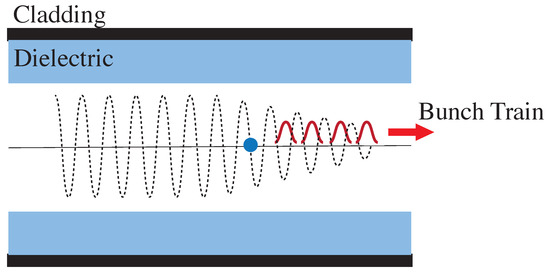Journal Description
Instruments
Instruments
is an international, peer-reviewed, open access journal on scientific instrumentation and its related methods and theory, published quarterly online by MDPI.
- Open Access— free for readers, with article processing charges (APC) paid by authors or their institutions.
- High Visibility: indexed within Scopus, Inspec, CAPlus / SciFinder, INSPIRE, and other databases.
- Rapid Publication: manuscripts are peer-reviewed and a first decision is provided to authors approximately 21.5 days after submission; acceptance to publication is undertaken in 5.4 days (median values for papers published in this journal in the second half of 2023).
- Recognition of Reviewers: reviewers who provide timely, thorough peer-review reports receive vouchers entitling them to a discount on the APC of their next publication in any MDPI journal, in appreciation of the work done.
Latest Articles
Drive Bunch Train for the Dielectric Trojan Horse Experiment at the Argonne Wakefield Accelerator
Instruments 2024, 8(2), 28; https://doi.org/10.3390/instruments8020028 - 10 Apr 2024
Abstract
The recently demonstrated concept of the plasma photocathode, whereby a high-brightness bunch is initialized by laser ionization within a plasma wakefield acceleration bubble, is informally referred to as Trojan Horse wakefield acceleration. In a similar vein, the dielectric Trojan Horse concept incorporates a
[...] Read more.
The recently demonstrated concept of the plasma photocathode, whereby a high-brightness bunch is initialized by laser ionization within a plasma wakefield acceleration bubble, is informally referred to as Trojan Horse wakefield acceleration. In a similar vein, the dielectric Trojan Horse concept incorporates a dielectric-lined waveguide to support a charged particle beam-driven accelerating mode and uses laser initiated ionization of neutral gas within the waveguide to generate a witness beam. One of the advantages of the dielectric Trojan Horse concept is the reduced requirements in terms of timing precision due to operation at a lower frequency. In this paper, we present experimental results on the generation and characterization of a four-bunch drive train for resonant excitation of wakefields in a cylindrical dielectric waveguide conducted at the Argonne Wakefield Accelerator facility. The results lay the foundation for the demonstration of a plasma photocathode scheme within a dielectric wakefield accelerating structure. Modifications to improve capture efficiency with improved beam transmission are suggested as well.
Full article
(This article belongs to the Special Issue Selected Papers from the Workshop on Physics and Applications of High Brightness Beams)
►
Show Figures
Open AccessArticle
Jitter Measurements of 1 cm2 LGADs for Space Experiments
by
Ashish Bisht, Leo Cavazzini, Matteo Centis Vignali, Fabiola Caso, Omar Hammad Ali, Francesco Ficorella, Maurizio Boscardin and Giovanni Paternoster
Instruments 2024, 8(2), 27; https://doi.org/10.3390/instruments8020027 - 29 Mar 2024
Abstract
►▼
Show Figures
This work explores the possibility of using Low Gain Avalanche Diodes (LGADs) for tracker-based experiments studying Charged Cosmic Rays (CCRs) in space. While conventional silicon microstrip sensors provide only spatial information about the charged particle passing through the tracker, LGADs have the potential
[...] Read more.
This work explores the possibility of using Low Gain Avalanche Diodes (LGADs) for tracker-based experiments studying Charged Cosmic Rays (CCRs) in space. While conventional silicon microstrip sensors provide only spatial information about the charged particle passing through the tracker, LGADs have the potential to provide additional timing information with a resolution in the order of tens of picoseconds. For the first time, it has been demonstrated that an LGAD with an active area of approximately 1 cm2 can achieve a jitter of less than 40 ps. A comparison of design and gain layers is carried out to understand which provides the best time resolution. For this purpose, laboratory measurements of sensors’ electrical properties and gain using LED and an Infrared laser, as well as their jitter, were performed.
Full article
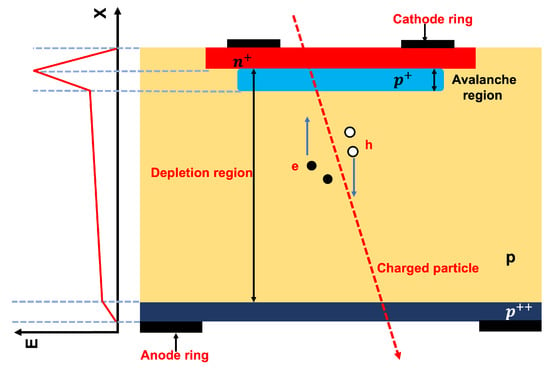
Figure 1
Open AccessArticle
Development of High-Voltage Electrodes for Neutron Scattering Sample Environment Devices
by
Guoliang Sun, Tingting Guo, Bao Yuan, Xiaojing Yang and Guang Wang
Instruments 2024, 8(2), 26; https://doi.org/10.3390/instruments8020026 - 28 Mar 2024
Abstract
►▼
Show Figures
The sample environment is essential to neutron scattering experiments as it induces the sample under study into a phase or state of particular interest. Various sample environments have been developed, yet the high-voltage electric field has rarely been documented. In this study, Bruce
[...] Read more.
The sample environment is essential to neutron scattering experiments as it induces the sample under study into a phase or state of particular interest. Various sample environments have been developed, yet the high-voltage electric field has rarely been documented. In this study, Bruce electrodes with various sectional geometries and chamber sizes were examined by using simulation modeling based on ANSYS Maxwell. A large uniform field region where samples would sit could be achieved in the planar region for all specifications, but the size of the region and the field strength varied with the gap distance between electrodes. The edging effect was inherently observed even for bare electrodes, about 1.7% higher in the sinusoidal region than the planar region, and was significantly deteriorated when a chamber was applied. This effect, however, presented an exponential decrease as the minimum distance between the electrode edge and the chamber shell increased. A compromise between the spatial confinement and the achievable field (strength and uniform region) could be reached according to the unique applicability of neutron instruments. This research provides a theoretical basis for the subsequent design and manufacturing of high-voltage sample environment devices.
Full article
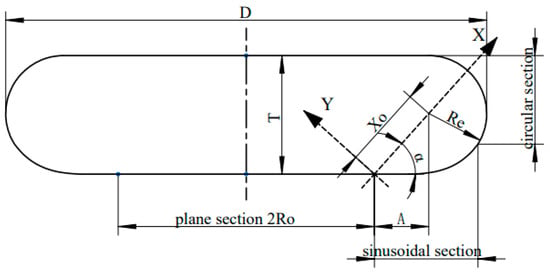
Figure 1
Open AccessArticle
The Imaging X-ray Polarimetry Explorer (IXPE) and New Directions for the Future
by
Paolo Soffitta
Instruments 2024, 8(2), 25; https://doi.org/10.3390/instruments8020025 - 25 Mar 2024
Abstract
An observatory dedicated to X-ray polarimetry has been operational since 9 December 2021. The Imaging X-ray Polarimetry Explorer (IXPE), a collaboration between NASA and ASI, features three X-ray telescopes equipped with detectors sensitive to linear polarization set to 120°. This marks the first
[...] Read more.
An observatory dedicated to X-ray polarimetry has been operational since 9 December 2021. The Imaging X-ray Polarimetry Explorer (IXPE), a collaboration between NASA and ASI, features three X-ray telescopes equipped with detectors sensitive to linear polarization set to 120°. This marks the first instance of a three-telescope SMEX mission. Upon reaching orbit, an extending boom was deployed, extending the optics and detector to a focal length of 4 m. IXPE targets each celestial source through dithering observations. This method is essential for supporting on-ground calibrations by averaging the detector’s response across a section of its sensitive plane. The spacecraft supplies power, enables attitude determination for subsequent on-ground attitude reconstruction, and issues control commands. After two years of observation, IXPE has detected significant linear polarization from nearly all classes of celestial sources emitting X-rays. This paper outlines the IXPE mission’s achievements after two years of operation in orbit. In addition, we report developments for future high-throughput X-ray optics that will have much smaller dead-times by using a new generation of Applied Specific Integrated Circuits (ASIC), and may provide 3D reconstruction of photo-electron tracks.
Full article
(This article belongs to the Special Issue Advances in Space AstroParticle Physics: Frontier Technologies for Particle Measurements in Space)
►▼
Show Figures
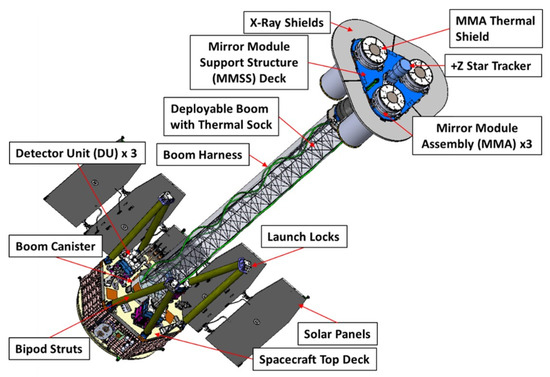
Figure 1
Open AccessFeature PaperArticle
A Portable Tool for Spectral Analysis of Plant Leaves That Incorporates a Multichannel Detector to Enable Faster Data Capture
by
Juan Botero-Valencia, Erick Reyes-Vera, Elizabeth Ospina-Rojas and Flavio Prieto-Ortiz
Instruments 2024, 8(1), 24; https://doi.org/10.3390/instruments8010024 - 17 Mar 2024
Abstract
In this study, a novel system was designed to enhance the efficiency of data acquisition in a portable and compact instrument dedicated to the spectral analysis of various surfaces, including plant leaves, and materials requiring characterization within the 410 to 915 nm range.
[...] Read more.
In this study, a novel system was designed to enhance the efficiency of data acquisition in a portable and compact instrument dedicated to the spectral analysis of various surfaces, including plant leaves, and materials requiring characterization within the 410 to 915 nm range. The proposed system incorporates two nine-band detectors positioned on the top and bottom of the target surface, each equipped with a digitally controllable LED. The detectors are capable of measuring both reflection and transmission properties, depending on the LED configuration. Specifically, when the upper LED is activated, the lower detector operates without its LED, enabling the precise measurement of light transmitted through the sample. The process is reversed in subsequent iterations, facilitating an accurate assessment of reflection and transmission for each side of the target surface. For reliability, the error estimation utilizes a color checker, followed by a multi-layer perceptron (MLP) implementation integrated into the microcontroller unit (MCU) using TinyML technology for real-time refined data acquisition. The system is constructed with 3D-printed components and cost-effective electronics. It also supports USB or Bluetooth communication for data transmission. This innovative detector marks a significant advancement in spectral analysis, particularly for plant research, offering the potential for disease detection and nutritional deficiency assessment.
Full article
(This article belongs to the Special Issue Feature Papers in Instruments 2021–2022)
►▼
Show Figures
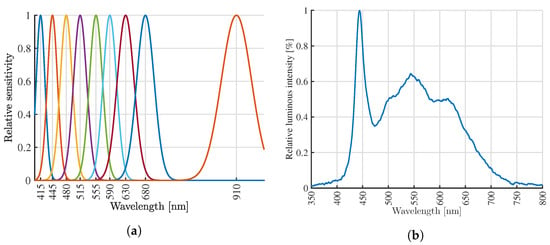
Figure 1
Open AccessArticle
On the Development of Inkjet-Printed Band Pass Filters Based on the Microstrip Hairpin Structure
by
Giovanni Gugliandolo, Antonino Quattrocchi, Giuseppe Campobello, Giovanni Crupi and Nicola Donato
Instruments 2024, 8(1), 23; https://doi.org/10.3390/instruments8010023 - 16 Mar 2024
Abstract
In recent years, inkjet printing has emerged as a promising advanced fabrication technology in the field of electronics, offering remarkable advantages in terms of cost-effectiveness, design flexibility, and rapid prototyping. For these reasons, inkjet printing technology has been widely adopted in various applications,
[...] Read more.
In recent years, inkjet printing has emerged as a promising advanced fabrication technology in the field of electronics, offering remarkable advantages in terms of cost-effectiveness, design flexibility, and rapid prototyping. For these reasons, inkjet printing technology has been widely adopted in various applications, including printed circuit board fabrication, sensor development (e.g., temperature, humidity, and pressure sensing), and antenna and filter production, up to the microwave frequency range. The present paper is focused on the investigation of a methodology based on Monte Carlo simulations for quantitatively assessing the influence of fabrication tolerances on the performance of inkjet-printed microwave devices. In particular, the proposed methodology is applied to an inkjet-printed hairpin band pass filter specifically tailored for operation in the L band (i.e., from 1 GHz to 2 GHz). The initial design phase involved the use of computer aided design (CAD) software to optimize the geometric dimensions of the designed filter to closely match the desired performance specifications in terms of bandwidth, insertion loss, and return loss. Later, a Monte Carlo analysis was conducted to evaluate the propagation of tolerances in the fabrication process throughout the design and to estimate their effects on device performance. The fabrication process exploited the advanced capabilities of the Voltera inkjet printer, which was used to deposit a silver-based conductive ink on a commercial Rogers substrate. The device’s performance was evaluated by comparing the simulated scattering parameters with those measured on the developed filter using a vector network analyzer (VNA), thus ensuring accurate validation of real-world performance.
Full article
(This article belongs to the Special Issue Microwave Measurements, Methods and Instruments for Science, Society and Industry)
►▼
Show Figures
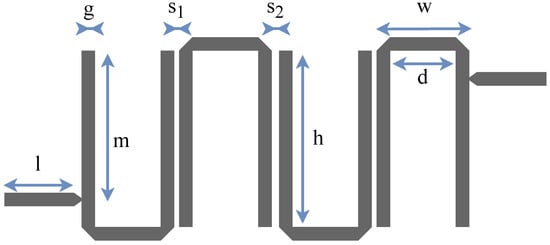
Figure 1
Open AccessArticle
Production and Processing of the Radionuclide 76Br
by
Karsten Franke, Jann Schöngart and Alexander Mansel
Instruments 2024, 8(1), 22; https://doi.org/10.3390/instruments8010022 - 13 Mar 2024
Abstract
Four-dimensional visualization, i.e., three-dimensional space plus time, of fluid flow and its interactions in geological materials using positron emission tomography (PET) requires suitable radiotracers that exhibit the desired physicochemical interactions. 76Br is a likely candidate as a conservative tracer in these studies.
[...] Read more.
Four-dimensional visualization, i.e., three-dimensional space plus time, of fluid flow and its interactions in geological materials using positron emission tomography (PET) requires suitable radiotracers that exhibit the desired physicochemical interactions. 76Br is a likely candidate as a conservative tracer in these studies. [76Se]CoSe was produced and used as the target material for the production of 76Br via the (p,n) reaction at a Cyclone 18/9 cyclotron. 76Br was separated from the target by thermochromatographic distillation using a semi-automated system, combining a quartz glass apparatus with a synthesis module. 76Br was successfully produced at the cyclotron with a physical yield of 72 MBq/µAh (EOB). The total radiochemical yield of 76Br from the irradiated [76Se]CoSe target (EOS) was 68.6%. A total of 40 MBq–100 MBq n.c.a. 76Br were routinely prepared for PET experiments in 3 mL 20 mM Cl− solution. The spatial resolution of a PET scan with 76Br in geological materials was determined to be about 5 mm. The established procedure enables the routine investigation of hydrodynamics by PET techniques in geological materials that strongly sorb commonly used PET tracers such as 18F.
Full article
(This article belongs to the Special Issue Selected Papers from the 15th Workshop of the European Cyclotron Network (CYCLEUR 2023))
►▼
Show Figures
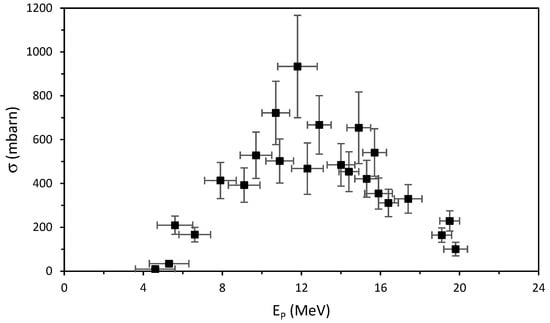
Figure 1
Open AccessArticle
Analysis of Near-Field Magnetic Responses on ZrTe5 through Cryogenic Magneto-THz Nano-Imaging
by
Samuel Haeuser, Richard H. J. Kim, Joong-Mok Park, Randall K. Chan, Muhammad Imran, Thomas Koschny and Jigang Wang
Instruments 2024, 8(1), 21; https://doi.org/10.3390/instruments8010021 - 05 Mar 2024
Abstract
►▼
Show Figures
One manifestation of light-Weyl fermion interaction is the emergence of chiral magnetic effects under magnetic fields. Probing real space magnetic responses at terahertz (THz) scales is challenging but highly desired, as the local responses are less affected by the topologically trivial inhomogeneity that
[...] Read more.
One manifestation of light-Weyl fermion interaction is the emergence of chiral magnetic effects under magnetic fields. Probing real space magnetic responses at terahertz (THz) scales is challenging but highly desired, as the local responses are less affected by the topologically trivial inhomogeneity that is ubiquitous in spatially averaged measurements. Here, we implement a cryogenic THz microscopy instrument under a magnetic field environment—a task only recently achieved. We explore the technical approach of this system and characterize the magnetic field’s influence on our AFM operation by statistical noise analysis. We find evidence for local near-field spatial variations in the topological semimetal ZrTe5 up to a 5-Tesla magnetic field and obtain near-field THz spectra to discuss their implications for future studies on the chiral magnetic effect.
Full article
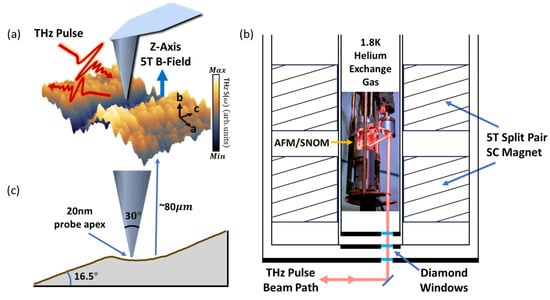
Figure 1
Open AccessReview
Scattering Polarimetry in the Hard X-ray Range
by
Enrico Costa
Instruments 2024, 8(1), 20; https://doi.org/10.3390/instruments8010020 - 02 Mar 2024
Abstract
In one and a half years, the Imaging X-ray Polarimetry Explorer has demonstrated the role and the potentiality of Polarimetry in X-ray Astronomy. The next steps include extension to higher energies. There is margin for an extension of the photoelectric approach up to
[...] Read more.
In one and a half years, the Imaging X-ray Polarimetry Explorer has demonstrated the role and the potentiality of Polarimetry in X-ray Astronomy. The next steps include extension to higher energies. There is margin for an extension of the photoelectric approach up to 20–25 keV, but above that energy the only technique is Compton Scattering. Grazing incidence optics can focus photons up to 80 keV, not excluding a marginal extension to 150–200 keV. Given the physical constraints involved, the passage from photoelectric to scattering approach can make less effective the use of optics because of the high background. I discuss the choices in terms of detector design to mitigate the problem and the guidelines for future technological developments.
Full article
(This article belongs to the Special Issue Advances in Space AstroParticle Physics: Frontier Technologies for Particle Measurements in Space)
►▼
Show Figures
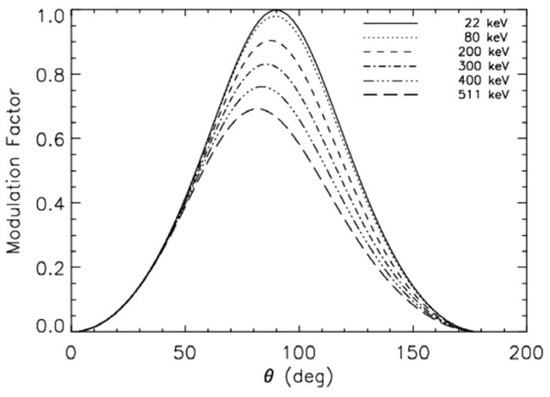
Figure 1
Open AccessArticle
A High-Flux Compact X-ray Free-Electron Laser for Next-Generation Chip Metrology Needs
by
James B. Rosenzweig, Gerard Andonian, Ronald Agustsson, Petr M. Anisimov, Aurora Araujo, Fabio Bosco, Martina Carillo, Enrica Chiadroni, Luca Giannessi, Zhirong Huang, Atsushi Fukasawa, Dongsung Kim, Sergey Kutsaev, Gerard Lawler, Zenghai Li, Nathan Majernik, Pratik Manwani, Jared Maxson, Janwei Miao, Mauro Migliorati, Andrea Mostacci, Pietro Musumeci, Alex Murokh, Emilio Nanni, Sean O’Tool, Luigi Palumbo, River Robles, Yusuke Sakai, Evgenya I. Simakov, Madison Singleton, Bruno Spataro, Jingyi Tang, Sami Tantawi, Oliver Williams, Haoran Xu and Monika Yadavadd
Show full author list
remove
Hide full author list
Instruments 2024, 8(1), 19; https://doi.org/10.3390/instruments8010019 - 01 Mar 2024
Abstract
Recently, considerable work has been directed at the development of an ultracompact X-ray free-electron laser (UCXFEL) based on emerging techniques in high-field cryogenic acceleration, with attendant dramatic improvements in electron beam brightness and state-of-the-art concepts in beam dynamics, magnetic undulators, and X-ray optics.
[...] Read more.
Recently, considerable work has been directed at the development of an ultracompact X-ray free-electron laser (UCXFEL) based on emerging techniques in high-field cryogenic acceleration, with attendant dramatic improvements in electron beam brightness and state-of-the-art concepts in beam dynamics, magnetic undulators, and X-ray optics. A full conceptual design of a 1 nm (1.24 keV) UCXFEL with a length and cost over an order of magnitude below current X-ray free-electron lasers (XFELs) has resulted from this effort. This instrument has been developed with an emphasis on permitting exploratory scientific research in a wide variety of fields in a university setting. Concurrently, compact FELs are being vigorously developed for use as instruments to enable next-generation chip manufacturing through use as a high-flux, few nm lithography source. This new role suggests consideration of XFELs to urgently address emerging demands in the semiconductor device sector, as identified by recent national need studies, for new radiation sources aimed at chip manufacturing. Indeed, it has been shown that one may use coherent X-rays to perform 10–20 nm class resolution surveys of macroscopic, cm scale structures such as chips, using ptychographic laminography techniques. As the XFEL is a very promising candidate for realizing such methods, we present here an analysis of the issues and likely solutions associated with extending the UCXFEL to harder X-rays (above 7 keV), much higher fluxes, and increased levels of coherence, as well as methods of applying such a source for ptychographic laminography to microelectronic device measurements. We discuss the development path to move the concept to rapid realization of a transformative XFEL-based application, outlining both FEL and metrology system challenges.
Full article
(This article belongs to the Special Issue Selected Papers from the Workshop on Physics and Applications of High Brightness Beams)
►▼
Show Figures
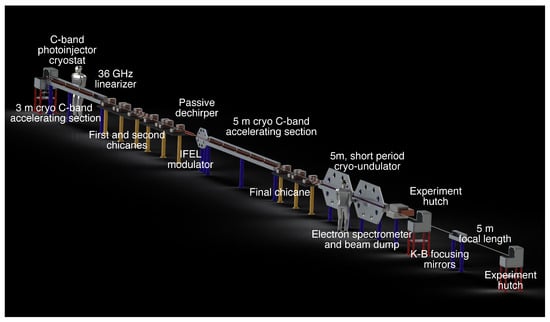
Figure 1
Open AccessArticle
Improving Fabrication and Performance of Additively Manufactured RF Cavities by Employing Co-Printed Support Structures and Their Subsequent Removal
by
Michael Mayerhofer, Stefan Brenner, Michael Doppler, Luis Catarino, Stefanie Girst, Vesna Nedeljkovic-Groha and Günther Dollinger
Instruments 2024, 8(1), 18; https://doi.org/10.3390/instruments8010018 - 01 Mar 2024
Abstract
►▼
Show Figures
The enormous potential of additive manufacturing (AM), particularly laser powder bed fusion (L-PBF), to produce radiofrequency cavities (cavities) has already been demonstrated. However, the required geometrical accuracy for GHz
The enormous potential of additive manufacturing (AM), particularly laser powder bed fusion (L-PBF), to produce radiofrequency cavities (cavities) has already been demonstrated. However, the required geometrical accuracy for GHz

Figure 1
Open AccessArticle
Results and Perspectives of Timepix Detectors in Space—From Radiation Monitoring in Low Earth Orbit to Astroparticle Physics
by
Benedikt Bergmann, Stefan Gohl, Declan Garvey, Jindřich Jelínek and Petr Smolyanskiy
Instruments 2024, 8(1), 17; https://doi.org/10.3390/instruments8010017 - 29 Feb 2024
Abstract
In space application, hybrid pixel detectors of the Timepix family have been considered mainly for the measurement of radiation levels and dosimetry in low earth orbits. Using the example of the Space Application of Timepix Radiation Monitor (SATRAM), we demonstrate the unique capabilities
[...] Read more.
In space application, hybrid pixel detectors of the Timepix family have been considered mainly for the measurement of radiation levels and dosimetry in low earth orbits. Using the example of the Space Application of Timepix Radiation Monitor (SATRAM), we demonstrate the unique capabilities of Timepix-based miniaturized radiation detectors for particle separation. We present the incident proton energy spectrum in the geographic location of SAA obtained by using Bayesian unfolding of the stopping power spectrum measured with a single-layer Timepix. We assess the measurement stability and the resiliency of the detector to the space environment, thereby demonstrating that even though degradation is observed, data quality has not been affected significantly over more than 10 years. Based on the SATRAM heritage and the capabilities of the latest-generation Timepix series chips, we discuss their applicability for use in a compact magnetic spectrometer for a deep space mission or in the Jupiter radiation belts, as well as their capability for use as single-layer X- and
(This article belongs to the Special Issue Advances in Space AstroParticle Physics: Frontier Technologies for Particle Measurements in Space)
►▼
Show Figures
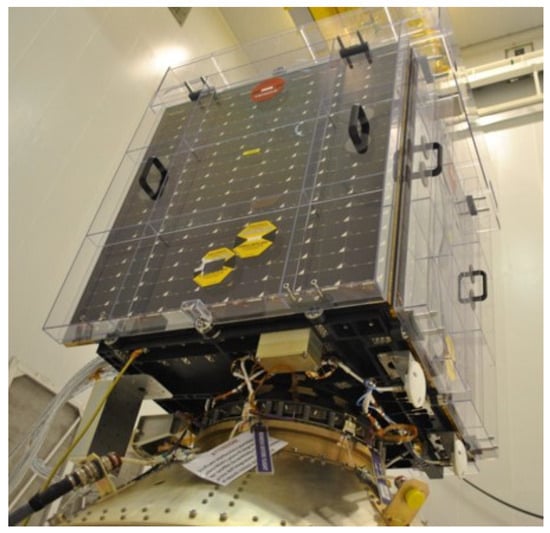
Figure 1
Open AccessReview
Structural Health Monitoring of Solid Rocket Motors: From Destructive Testing to Perspectives of Photonic-Based Sensing
by
Georgia Korompili, Günter Mußbach and Christos Riziotis
Instruments 2024, 8(1), 16; https://doi.org/10.3390/instruments8010016 - 28 Feb 2024
Abstract
In the realm of space exploration, solid rocket motors (SRMs) play a pivotal role due to their reliability and high thrust-to-weight ratio. Serving as boosters in space launch vehicles and employed in military systems, and other critical & emerging applications, SRMs’ structural integrity
[...] Read more.
In the realm of space exploration, solid rocket motors (SRMs) play a pivotal role due to their reliability and high thrust-to-weight ratio. Serving as boosters in space launch vehicles and employed in military systems, and other critical & emerging applications, SRMs’ structural integrity monitoring, is of paramount importance. Traditional maintenance approaches often prove inefficient, leading to either unnecessary interventions or unexpected failures. Condition-based maintenance (CBM) emerges as a transformative strategy, incorporating advanced sensing technologies and predictive analytics. By continuously monitoring crucial parameters such as temperature, pressure, and strain, CBM enables real-time analysis, ensuring timely intervention upon detecting anomalies, thereby optimizing SRM lifecycle management. This paper critically evaluates conventional SRM health diagnosis methods and explores emerging sensing technologies. Photonic sensors and fiber-optic sensors, in particular, demonstrate exceptional promise. Their enhanced sensitivity and broad measurement range allow precise monitoring of temperature, strain, pressure, and vibration, capturing subtle changes indicative of degradation or potential failures. These sensors enable comprehensive, non-intrusive monitoring of multiple SRM locations simultaneously. Integrated with data analytics, these sensors empower predictive analysis, facilitating SRM behavior prediction and optimal maintenance planning. Ultimately, CBM, bolstered by advanced photonic sensors, promises enhanced operational availability, reduced costs, improved safety, and efficient resource allocation in SRM applications.
Full article
(This article belongs to the Special Issue Photonic Devices Instrumentation and Applications II)
►▼
Show Figures
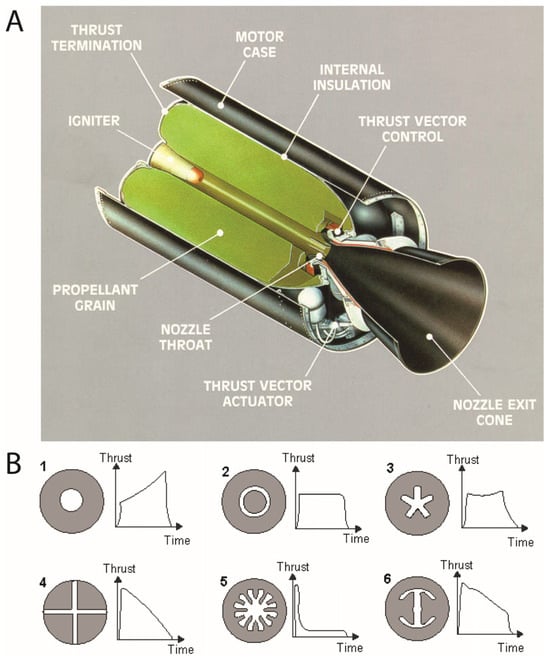
Figure 1
Open AccessArticle
A Modified Slicing Method with Multi-Dimensional Unfolding to Measure Hadron-Argon Cross Sections
by
Yinrui Liu
Instruments 2024, 8(1), 15; https://doi.org/10.3390/instruments8010015 - 25 Feb 2024
Abstract
►▼
Show Figures
Liquid argon technology is widely used by many previous and current neutrino experiments, and it is also promising for future large-scale neutrino experiments. When detecting neutrinos using liquid argon, many hadrons are involved, which can also interact with argon nuclei. In order to
[...] Read more.
Liquid argon technology is widely used by many previous and current neutrino experiments, and it is also promising for future large-scale neutrino experiments. When detecting neutrinos using liquid argon, many hadrons are involved, which can also interact with argon nuclei. In order to gain a better understanding of the detection processes, and to simulate neutrino events, knowledge of hadron-argon cross sections is needed. This paper describes a new procedure which improves upon the previous work with multi-dimensional unfolding to measure hadron-argon cross sections in a liquid argon time projection chamber. Through a simplified version of simulation, we demonstrate the validity of this procedure.
Full article
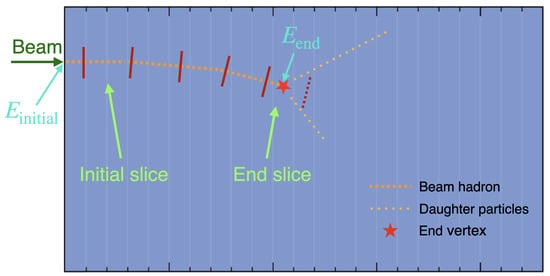
Figure 1
Open AccessArticle
Improving Cathode Testing with a High-Gradient Cryogenic Normal Conducting RF Photogun
by
Gerard Emile Lawler, Fabio Bosco, Martina Carillo, Atsushi Fukasawa, Zenghai Li, Nathan Majernik, Yusuke Sakai, Sami Tantawi, Oliver Williams, Monika Yadav and James Rosenzweig
Instruments 2024, 8(1), 14; https://doi.org/10.3390/instruments8010014 - 24 Feb 2024
Abstract
Future electron accelerator applications such as X-ray free electron lasers and colliders are dependent on significantly increasing beam brightness. With the observation that linac beam manipulation’s best preservation of max brightness is at the cathode, we are incentivized to create an environment where
[...] Read more.
Future electron accelerator applications such as X-ray free electron lasers and colliders are dependent on significantly increasing beam brightness. With the observation that linac beam manipulation’s best preservation of max brightness is at the cathode, we are incentivized to create an environment where we can study how to achieve the highest possible photogun brightness. In order to do so, we intend to extract beams from high-brightness photocathodes with the highest achievable accelerating gradients we can manage in a klystron-powered radiofrequency (RF) photogun. We utilize here cryogenic normal conducting cavities to achieve ultra-high gradients via limitation of breakdown rates (BDR). The low temperatures should also reduce cathode emittance by reducing the mean transverse energy (MTE) of electrons near the photoemission threshold. To this end, we have designed and produced a new CrYogenic Brightness-Optimized Radiofrequency Gun (CYBORG) for use in a new beamline at UCLA. We will introduce the enabling RF and photoemission physics as a primer for the new regime of high field low temperature cathodes we intend to enter. We further report the current status of the beamline commissioning, including the cooling of the photogun to 100 K, and producing 0.5 MW of RF feed power, which corresponds to cathode accelerating fields in the range of 80–90 MV/m. We further plan iterative improvements to both to 77 K and 1 MW corresponding to our ultimate goal >120 MV/m. Our discussion will include future beamline tests and the consideration of the initial realization of an ultra-high-gradient photoinjector concept.
Full article
(This article belongs to the Special Issue Selected Papers from the Workshop on Physics and Applications of High Brightness Beams)
►▼
Show Figures
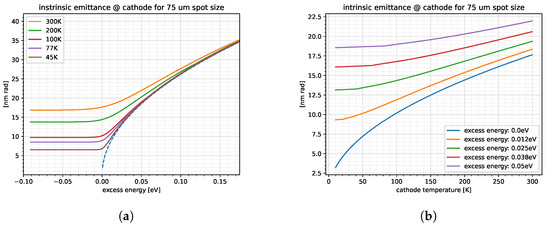
Figure 1
Open AccessArticle
A Silicon-Photo-Multiplier-Based Camera for the Terzina Telescope on Board the Neutrinos and Seismic Electromagnetic Signals Space Mission
by
Leonid Burmistrov
Instruments 2024, 8(1), 13; https://doi.org/10.3390/instruments8010013 - 20 Feb 2024
Abstract
NUSES is a pathfinder satellite project hosting two detectors: Ziré and Terzina. Ziré focuses on the study of protons and electrons below 250 MeV and MeV gamma rays. Terzina is dedicated to the detection of Cherenkov light produced by ultra-high-energy cosmic rays above
[...] Read more.
NUSES is a pathfinder satellite project hosting two detectors: Ziré and Terzina. Ziré focuses on the study of protons and electrons below 250 MeV and MeV gamma rays. Terzina is dedicated to the detection of Cherenkov light produced by ultra-high-energy cosmic rays above 100 PeV and ultra-high-energy Earth-skimming neutrinos in the atmosphere, ensuring a large exposure. This work mainly concerns the description of the Cherenkov camera, composed of SiPMs, for the Terzina telescope. To increase the data-taking period, the NUSES orbit will be Sun-synchronous (with a height of about 550 km), thus allowing Terzina to always point toward the dark side of the Earth’s limb. The Sun-synchronous orbit requires small distances to the poles, and as a consequence, we expect an elevated dose to be received by the SiPMs. Background rates due to the dose accumulated by the SiPM would become a dominant contribution during the last two years of the NUSES mission. In this paper, we illustrate the measured effect of irradiance on SiPM photosensors with a variable-intensity beam of 50 MeV protons up to a 30 Gy total integrated dose. We also show the results of an initial study conducted without considering the contribution of solar wind protons and with an initial geometry with Geant4. The considered geometry included an entrance lens as one of the options in the initial design of the telescope. We characterize the SiPM output signal shape with different μ-cell sizes. We describe the developed parametric SiPM simulation, which is a part of the full Terzina simulation chain.
Full article
(This article belongs to the Special Issue Advances in Space AstroParticle Physics: Frontier Technologies for Particle Measurements in Space)
►▼
Show Figures
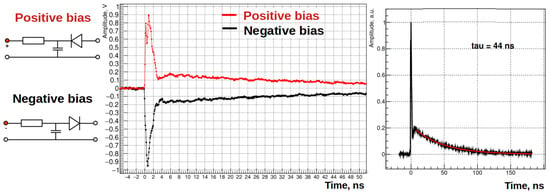
Figure 1
Open AccessArticle
Manipulation and Wakefield Effects on Multi-Pulse Driver Beams in PWFA Injector Stages
by
Fabio Bosco, Gerard Andonian, Obed Camacho, Martina Carillo, Enrica Chiadroni, Anna Giribono, Gerard Lawler, Nathan Majernik, Pratik Manwani, Mauro Migliorati, Andrea Mostacci, Luigi Palumbo, Gilles Jacopo Silvi, Bruno Spataro, Cristina Vaccarezza, Monika Yadav and James Rosenzweig
Instruments 2024, 8(1), 12; https://doi.org/10.3390/instruments8010012 - 20 Feb 2024
Abstract
Particle-driven plasma wakefield acceleration (PWFA) exploits the intense wakefields excited in a plasma by a high-brightness driver beam in order to accelerate a trailing, properly delayed witness electron beam. Such a configuration offers notable advantages in achieving very large accelerating gradients that are
[...] Read more.
Particle-driven plasma wakefield acceleration (PWFA) exploits the intense wakefields excited in a plasma by a high-brightness driver beam in order to accelerate a trailing, properly delayed witness electron beam. Such a configuration offers notable advantages in achieving very large accelerating gradients that are suitable for applications in particle colliders and photon production. Moreover, the amplitude of the accelerating fields can be enhanced by resonantly exciting the plasma using a multi-pulse driver beam with a proper time structure. Before the injection into the plasma stage, the pulsed electron beam, conventionally termed the comb beam, is usually produced and pre-accelerated in a radio-frequency (RF) linear accelerator (linac). In this pape, we discuss challenging aspects of the dynamics that comb beams encounter in the RF injector stage preceding the plasma. In particular, the examples we analyze focus on the use of velocity bunching to manipulate the time structure of the beam and the impact of dipole short-range wakefields on the transverse emittances. Indeed, both processes crucially affect the phase space distribution and its quality, which are determinant features for an efficient acceleration in the plasma. In addition, the analyses we present are performed with the custom tracking code MILES, which utilizes semi-analytical models for a simplified evaluation of wakefield effects in the presence of space charge forces.
Full article
(This article belongs to the Special Issue Selected Papers from the Workshop on Physics and Applications of High Brightness Beams)
►▼
Show Figures

Figure 1
Open AccessArticle
Characterization of a Large Area Hybrid Pixel Detector of Timepix3 Technology for Space Applications
by
Martin Farkas, Benedikt Bergmann, Pavel Broulim, Petr Burian, Giovanni Ambrosi, Philipp Azzarello, Lukáš Pušman, Mateusz Sitarz, Petr Smolyanskiy, Daniil Sukhonos and Xin Wu
Instruments 2024, 8(1), 11; https://doi.org/10.3390/instruments8010011 - 14 Feb 2024
Cited by 1
Abstract
We present the characterization of a highly segmented “large area” hybrid pixel detector (Timepix3, 512 × 512 pixels, pixel pitch 55 µm) for application in space experiments. We demonstrate that the nominal power consumption of 6 W can be reduced by changing the
[...] Read more.
We present the characterization of a highly segmented “large area” hybrid pixel detector (Timepix3, 512 × 512 pixels, pixel pitch 55 µm) for application in space experiments. We demonstrate that the nominal power consumption of 6 W can be reduced by changing the settings of the Timepix3 analog front-end and reducing the matrix clock frequency (from the nominal 40 MHz to 5 MHz) to 2 W (in the best case). We then present a comprehensive study of the impact of these changes on the particle tracking performance, the energy resolution and time stamping precision by utilizing data measured at the Super-Proton-Synchrotron (SPS) at CERN and at the Danish Center for Particle Therapy (DCPT). While the impact of the slower sampling frequency on energy measurement can be mitigated by prolongation of the falling edge of the analog signal, we find a reduction of the time resolution from 1.8 ns (in standard settings) to 5.6 ns (in analog low-power), which is further reduced utilizing a lower sampling clock (e.g., 5 MHz, in digital low-power operation) to 73.5 ns. We have studied the temperature dependence of the energy measurement for ambient temperatures between −20 °C and 50 °C separately for the different settings.
Full article
(This article belongs to the Special Issue Advances in Space AstroParticle Physics: Frontier Technologies for Particle Measurements in Space)
►▼
Show Figures
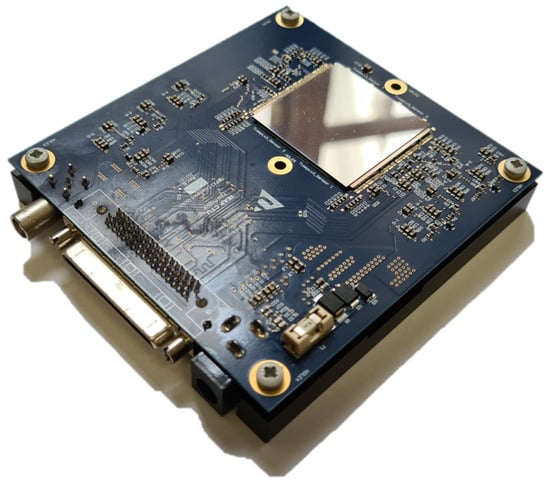
Figure 1
Open AccessReview
Production of Medical Radionuclides in the Center for Radiopharmaceutical Tumor Research—A Status Report
by
Martin Kreller, Santiago Andrés Brühlmann, Torsten Knieß, Klaus Kopka and Martin Walther
Instruments 2024, 8(1), 10; https://doi.org/10.3390/instruments8010010 - 07 Feb 2024
Abstract
A new Center for Radiopharmaceutical Cancer Research was established at the Helmholtz-Zentrum Dresden-Rossendorf in 2017 to centralize radionuclide and radiopharmaceutical production, as well as enable chemical and biochemical research. Routine production of several radionuclides was put into operation in recent years. We report
[...] Read more.
A new Center for Radiopharmaceutical Cancer Research was established at the Helmholtz-Zentrum Dresden-Rossendorf in 2017 to centralize radionuclide and radiopharmaceutical production, as well as enable chemical and biochemical research. Routine production of several radionuclides was put into operation in recent years. We report on the production methods of radiopharmaceutical radionuclides, in particular 11C, 18F, and radio metals like 61Cu, 64Cu, 67Cu, 67Ga, 131Ba, and 133La that are used regularly. In the discussion, we report typical irradiation parameters and achieved saturation yields.
Full article
(This article belongs to the Special Issue Selected Papers from the 15th Workshop of the European Cyclotron Network (CYCLEUR 2023))
►▼
Show Figures
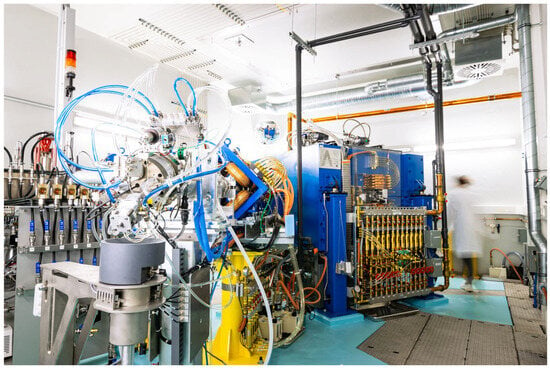
Figure 1
Open AccessArticle
Radio Frequency Properties of a 3D Printed Klystron Circuit
by
Charlotte Wehner, Bradley Shirley, Garrett Mathesen, Julian Merrick, Brandon Weatherford and Emilio Alessandro Nanni
Instruments 2024, 8(1), 9; https://doi.org/10.3390/instruments8010009 - 07 Feb 2024
Abstract
►▼
Show Figures
The manufacturing of active RF devices like klystrons is dominated by expensive and time-consuming cycles of machining and brazing. In this article, we characterize the RF properties of X-band klystron cavities and an integrated circuit manufactured with a novel additive manufacturing process. Parts
[...] Read more.
The manufacturing of active RF devices like klystrons is dominated by expensive and time-consuming cycles of machining and brazing. In this article, we characterize the RF properties of X-band klystron cavities and an integrated circuit manufactured with a novel additive manufacturing process. Parts are 3D printed in 316 L stainless steel with direct metal laser sintering, electroplated in copper, and brazed in one simple braze cycle. Stand-alone test cavities and integrated circuit cavities were measured throughout the manufacturing process. The un-tuned cavity frequency varies by less than 5% of the intended frequency, and Q factors reach above 1200. A tuning study was performed, and unoptimized tuning pins achieved a tuning range of 138 MHz without compromising Q. Klystron system performance was simulated with as-built cavity parameters and realistic tuning. Together, these results show promise that this process can be used to cheaply and quickly manufacture a new generation of highly integrated high power vacuum devices.
Full article
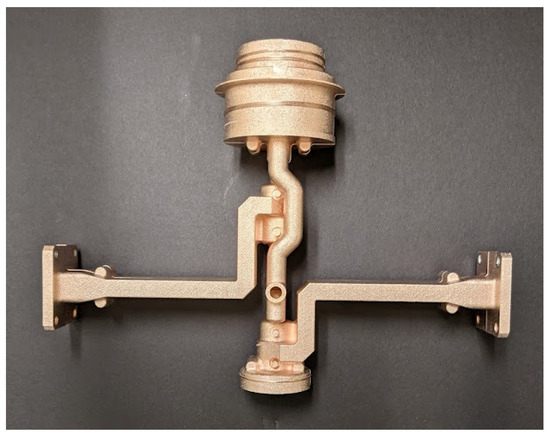
Figure 1
Highly Accessed Articles
Latest Books
E-Mail Alert
News
Topics

Conferences
Special Issues
Special Issue in
Instruments
Editorial Board Members’ Collection Series on Particle Accelerators
Guest Editors: Fabrizio Salvatore, James RosenzweigDeadline: 30 April 2024
Special Issue in
Instruments
Advances in Noble Element Detectors
Guest Editor: Sowjanya GollapinniDeadline: 22 May 2024
Special Issue in
Instruments
Printed Devices for Industrial and Medical IoT
Guest Editors: Mauro Serpelloni, Michela BorghettiDeadline: 20 July 2024
Special Issue in
Instruments
Near Detectors for Neutrino Oscillation Experiments
Guest Editors: Thorsten Lux, Claudio GigantiDeadline: 31 December 2024
Topical Collections
Topical Collection in
Instruments
Selected Papers from Instruments’ Editorial Board Members
Collection Editor: Antonio Ereditato

